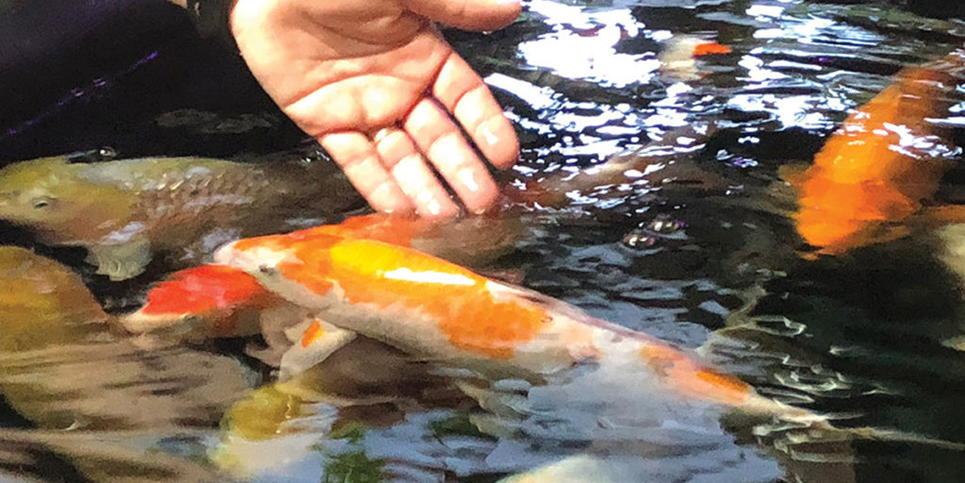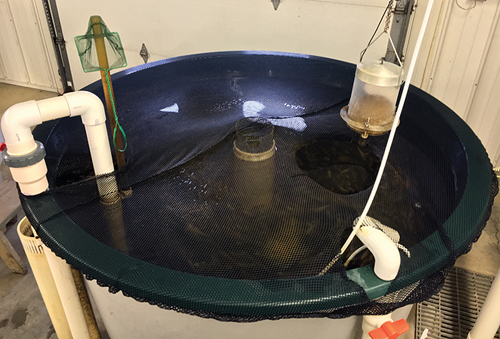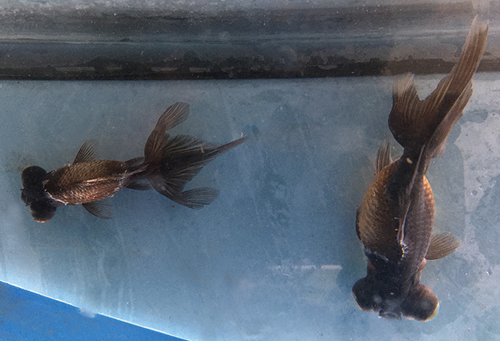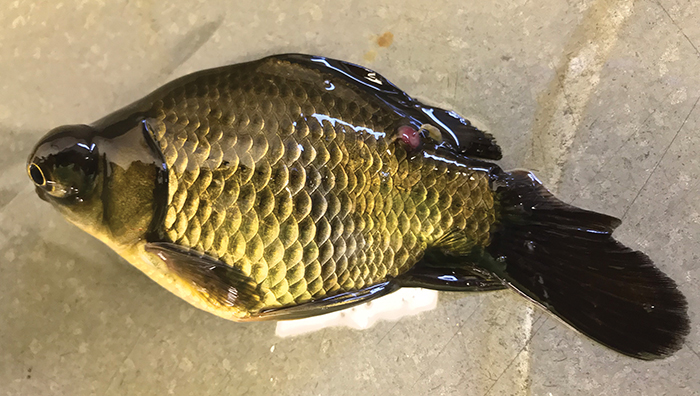
It might as well be a four-letter word, but considering the times we’re in, I’d go out on a limband say that most everyone has become familiar with what it means for us humans to quarantine. In the end, the idea is to keep people safe from potential harm.
This is exactly the idea when it comes to quarantining fish. To a hobbyist, they are like family. Quarantining freshwater fish is intended not only to prevent potential problems with integrating new fish into a population, but also to spare the lives of those that came before them. Since your new finned friends may have an issue grasping the concept of social distancing, they must quarantine!
While it’s always important to buy healthy fish from a reputable dealer, sometimes we end up adopt-ing fish from friends and family, or as a result of an “it was cheap” moment at a yard sale. Maybe your children won another goldfish at the fair. No big deal. But when you finally purchase that mature showa butterfly koi you had always wanted, it’s best to plan ahead!Two important factors in deter-mining how long to quarantine are the quality of care the new fish received before it came to you, and the personal value of your existing fish. The recommended range of a quarantine is somewhere between two and four weeks. Most pest problems should rear their ugly faces by then. In commercial situations, when adding brood stock, this may take upward of a year or more to ensure a safe and healthy integration.

Well, almost. A quarantine is just temporary quarters, but whether in a tank, a tub or extra pond, everything should be independent and isolated from all other fish to discourage trans-ferring harmful pathogens. All pumps, filters and other equipment should only be used for the quarantined fish. Cross- contamination happens when liquids or organic materials are transferred from one environment to another and can result from something as simple as using a net that wasn’t properly disinfected. Sanitation is essential, so wash your hands.
Maybe you’re blessed and saved that first practice pond you built in the far corner of your property. Or, perhaps you have a 20-gallon “hospital” tank to support your primary 100-gallon aquarium. Either way, water quality is and always will be the most important factor in the survival of any fish. The idea is to get the quarantine water to mimic the parameters of your established population. It is still crucial to monitor and maintain the alkalinity, pH, hard-ness, oxygen and ammonia. Continue to clean a tank and do small (but daily) water changes. Every fish species has a range of conditions it can tolerate, but poor water quality will always add extra stress that eventually leaves fishy friends more susceptible to pest pres-sures. Give your fish three or four days to acclimate themselves. This is a good time to do a visual inspection of their body, motions and behaviors.
Testing … One, Two …
It’s a scary world out there sometimes, and even though there are no cures for some things that ail us, at least we can test for them. Pathogens like bacterial infections, fungi, disease and parasites will often trigger a visual sign or symptom of the infection. A key indicator of a parasite might be elevated breathing, white-colored feces or erratic behavior, like flashing its white belly upward in an attempt to shed the infestation.

If you have a microscope, you could peek a little more closely at the fish’s health. Aside from sacrificing a fish for the greater good, a gill and scale sample is just as easy as (and certainly less deadly than) a sacrifice. This can usually be done without significantly harming any fish and should allow you to see if there are any parasites present like scale and gill flukes, chilodonella and trichodina. The microscopic world is very intriguing to me, but it’s often hard to imagine some of the things you can see when you look through the glass. Conversely, some anchor worms and fish lice produce sores that are visible to the naked eye.
Cotton wool disease, also known as colmunaris, is a bacterial disease caused by flexibacter bacteria. Columnaris appears as cottony, white fuzz found around the head and body, sometimes resembling what’s referred to as a “saddleback.” The fish become lethargic and quit eating. While flexibacter is likely present in all ponds, it can be transmitted easily under the right conditions. The same goes for white spot disease, otherwise known as “Ich.” White spot disease involves small, pinpoint-sized white cysts that eventually multiply and form larger, white patches on the scales, gills and fins. The cysts eventually produce a parasite that will eventually swim off to find another host.

I’ve never been a big believer in preventative treatments in lieu of testing, but they are out there for those of you who just don’t want to take any chances. It’s not always that easy to notice these issues if your quarantined fish are in a pond, but if and when you do recognize the signs of a pest, you do have options for treatments. Depending on the pathogen, I’ve always relied on salt baths, copper, potassium permanganate or formaldehyde-based medications. Regardless of your choice, you should always remember to read the directions and follow them closely to avoid any potentially harsh reactions. If all else fails, don’t be afraid to consult a fish biologist or veterinarian who is fluent in aquaculture.
Preventive Pond Care
Hopefully by the fourth week, any noticeable problems will have been addressed, and these lonely, isolated fish can swim in the waters they call their new home. As an added precaution, some enthusiasts like to introduce a couple of their oldest existing fish with the newly quarantined fish before they are introduced to the rest of the main population. This can be a last-ditch effort to predict any transmittable pathogen, but after an extra week or two of commingling, it should be sufficient.

In a perfect world, none of this would be necessary. But that is just not the way it is. Preventable illnesses arise in humans and fish alike, and they have to be tackled with focus and persistence, sometimes just in order to survive. Fear not, though. We have the tools and the knowledge not only to heal, but to avoid infections altogether. When your new fish finally swim away to meet their adopted friends and family, you can rest easy knowing that everything in your power was done to keep them safe and happy.


